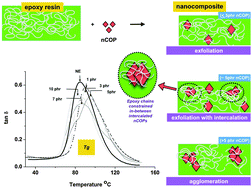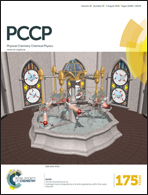Copper oxide nanoparticles in an epoxy network: microstructure, chain confinement and mechanical behaviour†
Abstract
Copper oxide nanoparticles (nCOPs) having octahedral morphology, synthesized through hydrazine reduction reaction were employed to formulate an epoxy based novel nanocomposite. The synthesis of copper oxide nanoparticles was carried out in polyethylene glycol medium to enhance their interfacial adhesion with the epoxy matrix. The extent of conservation of the crystalline nature and octahedral morphology of the nCOP in its epoxy nanocomposites was confirmed by X-ray diffraction and electron microscopy analysis. The mechanical properties including tensile, impact, fracture toughness and surface hardness of epoxy–nCOP nanocomposites were evaluated as a function of nCOP content. The maximum enhancement in strength, modulus, impact strength, fracture toughness and surface hardness of epoxy–nCOP nanocomposites was observed for 5 phr nCOP content. This may be due to the strong interaction between the nCOP and epoxy chains at this composition arising from its fairly uniform dispersion. A quantitative measurement of constrained epoxy chains immobilized by the nCOP octahedra was carried out using dynamic mechanical analysis. The enhancement in the storage modulus is related to the amount of the added nCOP as well as the volume of the constrained epoxy chains in the proximity of nCOP. The behaviour of epoxy–nCOP nanocomposites in this study has been explained by proposing a mechanism based on the distribution of nCOP domains in the epoxy matrix and the existing volume of constrained epoxy chains.


 Please wait while we load your content...
Please wait while we load your content...